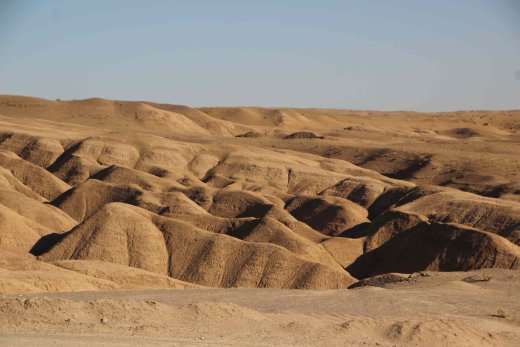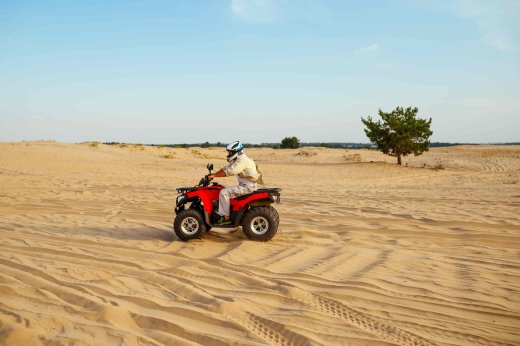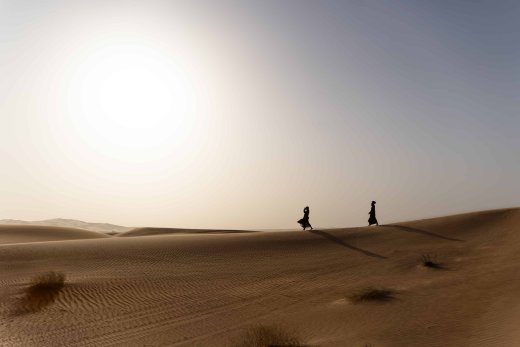
How Abu Dhabi Fossil Dunes Are at the Forefront of Desert Conservation?
Abu Dhabi is not famous for its skyscrapers and city lights, but is also home to some of the most interesting natural wonders in the region. The Abu Dhabi Fossil Dunes around Al Wathba are photogenic formations that are more than just aesthetics.
These ancient geological structures now form the basis of desert conservation in the UAE. These otherworldly structures, shaped over tens of thousands of years, are more than just geological wonders. They’re a sign of the UAE’s increasing commitment to desert conservation. But with tourism on the up and the environment coming under increasing pressure, there are several steps taken to preserve this rare part of the region’s natural heritage.
Let us understand how
What Makes the Fossil Dunes So Unique?
Before we get into conservation, let us first understand what makes the Fossil Dunes Abu Dhabi so special.
Comprised of a combination of calcium carbonate and wind-blown sand, the dunes hardened over thousands of years into dramatic, sculptural structures. The formations appear nearly like frozen waves in the desert. Situated near the Al Wathba region, they’ve garnered interest from scientists, photographers and eco-conscious tourists across the globe.
With such distinctive properties, its no wonder they've been a popular stop on countless Abu Dhabi dune buggy tour routes. Courtesy of Save the Manatee Club With great numbers, however, comes great responsibility — and that’s where conservation efforts come in.
The Role of Desert Conservation
The UAE has long recognized the importance of preserving its desert ecosystems. In the case of the Fossil Dunes Abu Dhabi, desert conservation isn’t just a goal—it’s an active, ongoing initiative.
Through the work of the Environment Agency – Abu Dhabi (EAD), a comprehensive plan has been set into motion to develop, protect, and sustainably manage the Al Wathba fossil dunes. This includes:
- Enhancing site infrastructure to manage tourism better
- Adding educational signage to raise awareness
- Coordinating with waste management services to keep the area clean
- Designating the site as a natural reserve
The idea is simple but powerful: make the dunes accessible, but also sustainable.
On-the-Ground Efforts: What’s Really Happening
There’s a strong human effort behind preserving the Al Wathba fossil dunes. The EAD has installed temporary signboards at pressure points—areas where human impact is highest. This helps inform visitors of the importance of treading carefully.
They’ve also partnered with Tadweer, the Abu Dhabi Center for Waste Management, to ensure regular cleanups and install waste containers throughout the site. It may sound simple, but these small steps make a big difference.
The team also removed graffiti found on some fossil formations—a sad reminder of the damage that can come from even a few careless visitors. Monitoring has since been increased to prevent repeat incidents.
And perhaps most importantly, the EAD launched a social media campaign to educate the public about respectful behavior at the dunes. Visitors are urged not to host large gatherings, climb on the formations, or leave trash behind. Drawing or writing on the formations? That’s not just discouraged—it’s damaging.
Balancing Tourism with Preservation
There’s no denying that tourism has helped put the Fossil Dunes Abu Dhabi on the global map. From family picnics to a stop on an Abu Dhabi dune buggy tour, the dunes have become an accessible outdoor escape.
But here’s the thing: If the site isn’t protected, it could be lost.
That’s why the focus is on eco-tourism. The plan is to allow people to experience the beauty of the dunes—without harming them. Visitor centers, guided walks, and well-marked paths can help manage foot traffic. At the same time, conservation messaging ensures that guests walk away not only with great photos but a deeper respect for the land.
Why Does It Matters for the Future?
The Fossil Dunes Abu Dhabi aren’t just about pretty pictures or even scientific research. They’re about legacy. They remind us that nature is not static—it evolves, it survives, and with the right support, it thrives.
In a world where natural wonders are disappearing fast, the UAE’s effort to lead with desert conservation is something worth paying attention to. If done right, it’s a model that can inspire similar efforts in fragile ecosystems around the world.
Conclusion
The Fossil Dunes Abu Dhabi aren’t just beautiful—they’re a call to action. They show how ancient formations can teach modern lessons about balance, responsibility, and respect. With the leadership of the EAD and the support of the public, the UAE is showing the world how desert conservation can thrive, even in the most fragile environments.
If you are planning to visit the Fossil Dunes Abu Dhabi and admire this natural wonder, then Visitors Destination is here to plan your Abu Dhabi trip. Book your packages today and explore the hidden gems of Abu Dhabi.
FAQs
1. Why are the Abu Dhabi Fossil Dunes so important to protect?
The Fossil Dunes Abu Dhabi are natural limestone formations that took tens of thousands of years to form. They’re one-of-a-kind in their appearance and composition. Protecting them helps preserve a rare geological story and supports the UAE’s wider efforts in desert conservation.
2. Can I visit the Al Wathba fossil dunes?
Yes! The Al Wathba fossil dunes are open to the public and accessible by road from Abu Dhabi city. They’ve become a popular destination for nature lovers, photographers, and families. However, it’s important to respect all guidelines—no climbing, no graffiti, and no littering.
3. What is the Environment Agency – Abu Dhabi (EAD) doing at the site?
EAD is actively working to conserve the dunes through several initiatives: installing signboards, coordinating cleanups with Tadweer, removing graffiti, monitoring erosion, and using drones for surveillance. They also plan to officially declare the site a nature reserve and enhance it with tourism-friendly infrastructure.
4. Is it safe to go on an Abu Dhabi dune buggy tour near the fossil dunes?
Yes, but with care. Many Abu Dhabi dune buggy tour operators are eco-conscious and avoid sensitive areas like the fossil dunes. If you’re taking a tour, choose a company that values sustainability and avoids driving too close to fragile formations.
5. What are the rules visitors should follow at the fossil dunes?
Visitors should avoid climbing the formations, hosting large gatherings, or leaving behind any trash. Drawing or writing on the dunes is strictly discouraged. Respecting these guidelines helps ensure the dunes stay intact for future generations.












